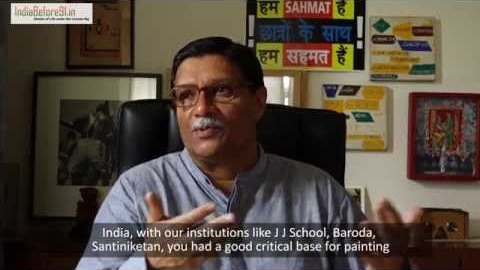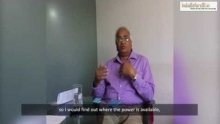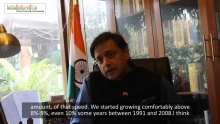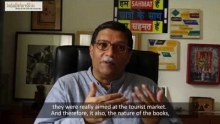Ram Rahman, an eminent photographer and curator, explains how economic restrictions and control in the early 50s and 60s, compelled architects in the early ‘50s and ‘60s to utilize innovative techniques, which ultimately produced iconic buildings. He discusses the critical intervention of liberalization in opening up the space of photography and architecture to emerge as independent disciplines in the country.
Read the transcript below:
You know, many of the politicians, and many of the bureaucrats, who had come to Delhi, who set up the new government after Independence, were extremely progressive people; they had a real vision for a new, modern, secular, India. And certainly, the architecture reflected that enormously. In fact, looking back now, these last two-three years, when I have been putting together, say, the exhibition of Madan Mahatta’s photography of the architecture of that period, or on my father’s own work, you realize that architecturally, our modernist tradition in those years was absolutely amazing. And part of the reason is because there was this vision for a new society, looking to the future. But there was also- you had great economic restrictions, so you had to work with very simple material, and I think that led to enormous amount of experimentation and innovation in design. You know, it wasn’t easy to conceive a grand structure, you could do it. Part of the debate happening now is the destruction of the Hall of Nations, which was built in 1972, by Raj Rewal. Now, if you look at a building like that, which was, you know, had a incredible conception of the space frame, but was literally hand-built, using board-concrete, and with incredible engineering by Mahendra Raj. So that kind of, and it’s a path-breaking building in modernist architecture across the world. So that kind of innovation was really spurred by the times, and I think, you know, those economic restrictions, restrictions of resources etc., actually was a very positive thing, because it goaded people into using their limited resources but it also opened up your imagination enormously.
Well, materially, you see, one of the things was also access to books; to histories of photography or histories of architecture. It was when I was in college in the US that I was exposed to all of that. And I remember talking about photography you know,years ago, Pablo Bartholomew, my fellow practitioner, was in school with me. The first time he came to the US and stayed with me, and went to the supermarket, he was absolutely shocked, to see the range of products available and their packaging. And I remember this so clearly, he was just shocked, saying, “My God! Everything is in cardboard boxes and plastic. You get, you know, a bag to carry it (things) home, just for a minute and then you throw the bag away.” Simple things like when you went shopping, you didn’t have plastic, you didn’t have food that packaged in plastic material. (In India), you would go and buy your rice and dal loose, and carry it home in paper bags which was made with recycled newspaper. And that lasted till, not very long ago. People don’t realize that those material changes have been shocking, and I think, a lot of them actually are really bad, because, we are following a consumerist pattern, which has been very destructive.
You know, we have always had very good art history in India, with our institutions like J J School, Baroda, Santiniketan, you had a good critical base for painting and sculpture, for modern painting and sculpture but nothing for photography, and not really good enough (for) architecture either, and architecture and photography in many ways are linked, because you remember architecture through the photographs, or most people see architecture through the photography, because they don’t necessarily travel all over the place, to see all these buildings. Really in the 2000s, more the market started opening up, when you were able to buy video cameras. You know, think that nothing like this was possible or available in the time when we were forming as practitioners ourselves, so it’s a huge difference.







